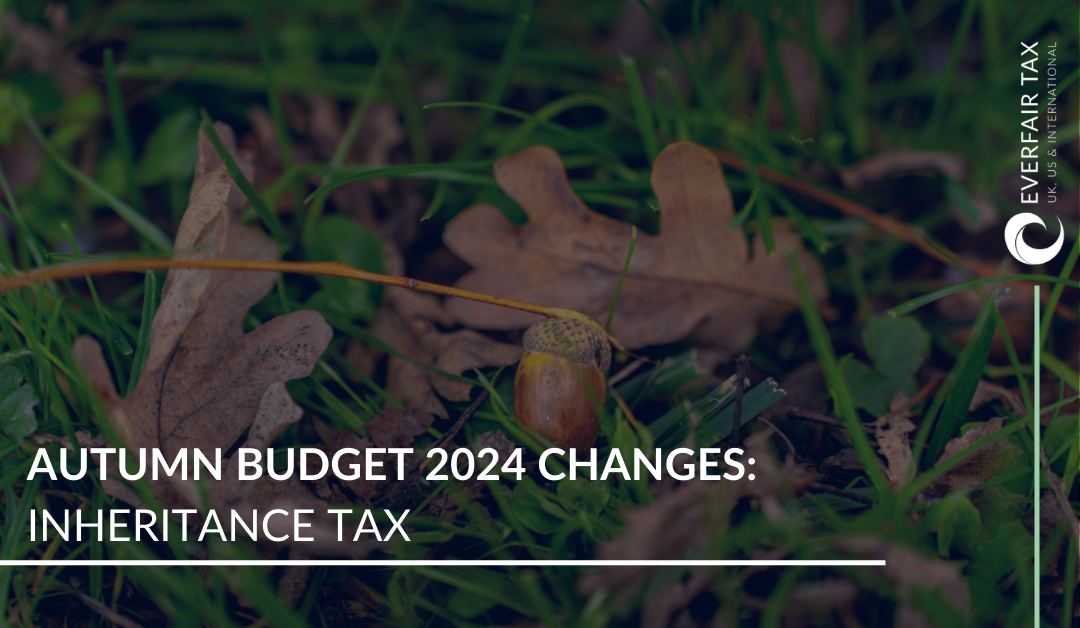Inheritance tax is often at the heart of tax planning, with protecting hard earned wealth for the next generation and ease of administration for those left behind, being crucial to many individuals.
To help provide some guidance on this key topic we have summarised the most important rules and things to be aware of when starting to formulate your plan and having the important family conversations.
Inheritance tax is usually paid from the deceased person’s estate.
Along with transferring assets to your spouse or civil partner, gifting can be an effective way to reduce inheritance tax.
Gifts to charities are exempt
You have an annual £3000 gift allowance (any allowance unused can be used in the following year)
Gifts of less than £250 to as many individuals as you want
Gifts can be made on the occasion of a wedding (the amount that can be gifted depends on their relationship to you)
If you have enough income to maintain your usual standard of living, you can make gifts from surplus income (you should seek advice before utilizing this exemption)
Gifts to help with the living costs of certain individuals (such as an elderly dependent)
If you make any gifts in your lifetime and survive for seven years after making them, then their value will not be counted as part of your estate on death and will be exempt from IHT.
Inheritance tax is a tax on the estate (ie the property, money and possessions) of a deceased person.
The tax is payable based on the assets held within the estate; the estate is made up of everything the deceased owned, less any debts and funeral expenses. Nothing is payable on the first £325,000 of an estate.
A transfer of assets to a spouse or civil partner is exempt from inheritance tax, and applies to lifetime transfers, as well as transfers of assets upon death.
There are several effective strategies to minimize your inheritance tax liability:
Make a Will: Ensure that your Will is kept up to date and accurately reflects your wishes upon death. A will can be structured in an IHT-efficient manner.
Gifts: As mentioned above, making gifts to your family, loved ones, or charitable organizations during your lifetime can lower the taxable value of your estate.
Pension: Most pensions fall outside of a deceased’s estate for IHT and making full use of pension allowances can be an effective way to reduce IHT
Charitable Bequests: Consider leaving at least 10% of the taxable portion of your estate to charity to reduce the IHT rate from 40% to 36%.
Tax efficient investments and business relief: Investing in assets that qualify for tax relief, such as those eligible for business relief, can significantly reduce your inheritance tax bill.
Contents
UK
Nil Rate Band – Transferable and Residential
Reliefs and Exemptions Available on Death
Reliefs and Exemptions Available for Lifetime Gifts
Gifts With Reservation of Benefit
International Aspects of Inheritance Tax
USA
Estate Tax Rate and Exempt Limit
Exemptions including Gifts to Charity
Holding Business Assets as a Non-US Citizen
Further Aspects of the Double Taxation Agreement
Additional Inheritance Tax Resources
Who Pays Inheritance Tax?
Inheritance Tax (IHT) is primarily a tax on an individual’s death estate.
When an individual dies their estate (including all property, possessions and money) incurs IHT if its value exceeds a particular amount.
Any IHT due is generally taken directly from the estate itself rather than the beneficiaries personally.
IHT can also be payable on certain lifetime transfers of value or ‘gifts’ where the beneficiary is usually liable for the tax due. Gifts for this purpose could include a gift of an asset, or a sale at undervalue.
Calculating Inheritance Tax
On death, the IHT rate in the UK is currently 40%, payable on the amount that the taxable estate exceeds the available Nil Rate Band (NRB).
The taxable estate is amount after taking into account exemptions and reliefs such as spousal and charitable exemptions. The main exemptions and reliefs are discussed in more detail below.
The nil rate band is currently £325,000 but can increase to up to £1 million in specific circumstances. The available NRB can also be reduced by lifetime gifts in the seven years before death which become subject to IHT. These thresholds are not currently due to change until April 2030
Despite the relatively low threshold, currently only 4-6% of estates in the UK are expected to be liable to pay IHT.
It is possible to simplify the level of IHT the estate will need to pay based on the NRB and exemptions available.
No IHT is due if:
- The value of the deceased’s (D’s) estate is below the available basic NRB.
- If D leaves everything above the available basic NRB to their spouse or civil partner.
- If D leaves everything above the available basic NRB to an exempt beneficiary such as a charity or community sports team.
- A combination of B and C.
However, if the value of D’s estate is above the available basic NRB, then that part might be liable for IHT at the rate of 40% depending on available exemptions.
So, for example, if D’s estate is worth £525,000 and the available basic NRB is £325,000, the tax charged will be on £200,000 (£525,000 – £325,000)
The IHT would be £80,000 (£200,000 x 40%)
However, it needs to be noted that even if the estate is below the available NRB, or it is above but with no IHT payable due to exemptions and reliefs, it may still need to be declared to HMRC.
What’s the Meaning of Estate?
The estate is all the property and money owned by an individual at death less debts owed by them. It includes everything from property to business interests and stocks and shares to life insurance policies (and, from 6 April 2027, undrawn pension plans). Although not included in an estate, the amount of IHT can be affected by certain trust entitlements an individual holds.
An estate is valued the day before death.
Nil Rate Band – Transferable and Residential
The available NRB is the cut-off point from which IHT is to be paid.
In 2025/26 the basic NRB is £325,000.
This means that an estate value below the available NRB is not liable to IHT, but anything over this will be taxable at a rate of 40%.
Transferable NRB
An unused NRB can also be transferred to a surviving spouse/civil partner.
Continuing the example of D above, the NRB might be increased if D is widowed or a surviving civil partner.
If none of the NRB was used when their spouse/civil partner died, then 100% of the NRB is transferred to D as the surviving spouse/civil partner.
So when D dies their NRB would be increased by 100% i.e. to £650,000 for 2025/26.
This extra transferable element is known as Transferable Nil Rate Band (TNRB).
Where only some of the NRB is unused on the first death, the TNRB is based on the unused proportion.
An individual can have TNRBs from more than one deceased spouse/civil partner, but the total TNRB cannot exceed 100%.
It is possible, though, for Wills to be written in such a way to ensure that no NRBs are wasted. So it is important that Wills are reviewed to make the most use of NRBs available.
Residence NRB
The amount that falls to be taxed at the nil-rate can be increased where the deceased had a residence in their estate at death or previously had a residence. The additional amount is known as the Residence Nil Rate Band (RNRB).
Continuing the example of D above, if his estate at death included, or previously included, a residence then it could qualify for the RNRB.
To be eligible for the RNRB, D’s residence must have been his residence for some time during his ownership and the residence (or assets up to the value of a previously owned residence) must be inherited by lineal descendants e.g. children or grandchildren.
The RNRB is up to the lower of £175,000 or the value of the residence in question. Where a residence has been sold and a cheaper replacement acquired, there are provisions in place to protect the value built up in the previous residence.
The RNRB is reduced where the net value of an estate exceeds £2,000,000. Net value is the value after deducting liabilities but before taking into account exemptions or reliefs. The reduction is £1 for every £2 the net value of the estate exceeds £2,000,000. So where the maximum RNRB of £175,000 is available, it will be reduced to nil if the net value of the estate exceeds £2,350,000.
The RNRB is also transferable to a surviving partner/spouse in a similar way to the main NRB so could be up to £350,000 per couple
As mentioned above, this allowance is due to remain at its current level until April 2030.
Reliefs and Exemptions Available on Death
Spousal Exemption
Couples can generally inherit from their spouse/civil partner without IHT being payable. But, please refer to the international section below regarding where the recipient spouse/civil partner is not a long-term UK resident (domicile prior to 6 April 2025).
Gifts to Charity
Where part of the estate is left to charity, the value left to charity is deducted from the value of the estate before the IHT is calculated. Therefore, reducing the amount due. This only applies to gifts to UK, EU and Norwegian, Icelandic and Liechtenstein charities.
In addition, where at least 10% of the net value of the estate is left to charity, anything chargeable in excess of the £325,000 NRB threshold will be taxed at 36%.
Other Exemptions
Legacies left to political parties who have at least two MPs (or one MP and at least 150,000 votes) are tax exempt, as are legacies to universities, community projects and museums.
Business Property Relief
Interests in businesses, including certain shares and securities, may qualify Business Property Relief (BPR) at 50% or 100%. Relief is only when the relevant business has been owned for more than two years.
Businesses which qualify are those which do not exist wholly or mainly for the purposes of making, or holding of investments or share, or land dealing.
BPR at 100% is available on:
- a business or interest in a business
- shares in an unquoted company
- shares in a company listed on the alternative investment market (AIM)
- securities in an unquoted business which contribute to having control
BPR at 50% relief is available on:
- shares or securities in a quoted business which contribute to having control
- assets, such as land and buildings, used in the qualifying business of a company the deceased had control of or a partnership he had an interest in
- assets, such as land and buildings, held in trust in which the deceased had an interest in possession and used in a qualifying business carried on by the deceased
No relief is available for property subject to a binding contract for sale.
Changes to Business Property Relief from April 2026
Currently there is no limit to the value of assets which can qualify for 100% relief. However, this will change from 6 April 2026 when the maximum relievable at 100% will be capped at £1,000,000 with the balance being relieved at 50%. So, for example, if qualifying business property is worth £2,500,000 there will be 100% relief on the first £1,000,000 and 50% on the balance of £1,500,000. IHT will be charged on £750,000 (£1,500,000 x 50%) with the IHT being £300,000 (£750,000 x 40%) which is a significant increase on the current fully relieved position.
Trusts will have their own £1,000,000 limit, though this will be shared by trusts set up after 6 April 2026 by the same settlor.
There is a sting in the tail as well, with both BPR and APR sharing the £1,000,000 limit though it is expected to refresh every seven years.
As well as the capping of 100% relief, relief for AIM shares will be reduced from 6 April 2026. Currently such shares qualify for 100% relief but this will be reduced to 50%.
Agricultural Property Relief
Some agricultural property used as part of a working farm may qualify for Agricultural Property Relief (APR). Generally, APR is given for land that is used for growing crops or raising livestock.
It is not just directly owned property that can qualify, relief can also be given for the agricultural that is reflected in the value of shares of companies which own such property.
Property that does not qualify includes:
- Farm equipment and machinery
- Derelict buildings
- Harvested crops
- Livestock
- Property subject to a binding contract of sale
The property must have been used for agricultural purposes for two years if owner/occupied, or seven years if occupied by someone else.
APR at 100% is available if:
- The owner farmed the land
- The land was used by someone else on a short-term grazing licence
- The land was let on a tenancy after September 1995
Otherwise APR is at 50%.
Changes to Agricultural Property Relief from April 2026
As for BPR, there is currently no limit to the value of assets which can qualify for 100% APR but this will be capped at £1,000,000 from 6 April 2026 as a shared limit with BPR. Again, the balance will be relieved at 50%.
Trusts will have their own £1,000,000 limit, though this will be shared by trusts set up after 6 April 2026 by the same settlor.
Lifetime Gifts
IHT can also be payable on lifetime gifts, with any IHT depending on whether the gift is a potentially exempt or chargeable transfer. Reliefs and exemptions can reduce the IHT payable. The main exemptions and reliefs are given below.
For this purpose, the value of the gift is not always simply the value of the asset gifted. Rather, the value of the gift is based on the fall in value of the donor’s estate.
Potentially Exempt Transfers
Potentially Exempt Transfers (PETs) cover all gifts between individuals while the donor is alive, and which initially are not liable to IHT.
However, if the donor dies within seven years of making the gift, the gift loses its exempt status. In turn, the beneficiary could be liable to IHT based on the seven-year rule. No IHT is due on any PETs made more than seven years before death.
The Seven-Year Rule
Any PETs made less than seven years before death could be liable to IHT.
A PET made within seven years of death is compared to the available NRB (but not RNRB) and any excess over the available NRB is taxed at 40%.
This is subject to the taper relief described below, so the amount of IHT due will depend on when the gift was made.
Gifts in the seven years before death are considered in chronological order. The available NRB for each is reduced by chargeable gifts in the seven years before the gift in question. So earlier gifts use up the available NRB in priority to later ones. Gifts on the same day share the available NRB.
Chargeable Lifetime Transfers
Lifetime gifts which are neither exempt nor PETs are Chargeable Lifetime Transfers (CLTs). A common CLT is a gift to a discretionary trust or certain other trusts.
IHT is only payable if the value of the gift exceeds the available NRB (£325,000 for 2025/26) but only the donor’s own NRB and not the TNRB or RNRB.
Reminder of terminology
PET – Potentially Exempt Transfer
NRB – Nil Rate Band
TNRB – Transferable Nil Rate Band
RNRB – Residence Nil Rate Band
It is usually the trustees who pay the IHT though at a lifetime rate of 20%. The donor could elect to pay the IHT, in which case the rate is grossed up to 25%.
The available NRB is the basic NRB, less any other CLTs within the previous seven years.
The Seven-Year Rule
The seven-year rule also applies in a modified manner to CLTs.
The IHT on CLTs in the seven years before death is reworked based on the death rate of 40% but subject to taper relief. All gifts in the seven years are considered chronologically, including PETs becoming chargeable and CLTs. So it could be that a PET uses up all, or part of, the NRB previously used against a CLT for lifetime tax purposes.
Any IHT paid on a CLT during lifetime is set against the IHT on that CLT arising on death, to reduce the amount payable. However, no repayment of the lifetime IHT can arise.
Taper Relief
The IHT rate arising on death for lifetime gifts is tapered as follows:
Death within Tapered rate
3 years of gift 40%
3-4 years of gift 32%
4-5 years of gift 24%
5-6 years of gift 16%
6-7 years of gift 8%
Reliefs and Exemptions Available for Lifetime Gifts
Spousal exemption
Spousal exemption as described above, is also available for lifetime gifts.
Gifts to Charity
Charity exemption as described above is also available for lifetime gifts.
Annual exemption
An annual exemption of £3,000 is available to set against gifts. If unused it can be carried forward one year.
Small gifts exemption
A small gifts exemption is available for gifts to individuals of up to £250 per year per individual. It cannot be used in conjunction with other exemptions.
Gifts in consideration of marriage/civil partnership
An exemption is available for gifts in contemplation of marriage/civil partnership. The amount of the exemption varies depending on the relationship with the recipient:
Donor Exemption
Parent £5,000
Remote ancestor/party to marriage £2,500
Other £1,000
Gifts Out of Surplus Income
An exemption is available for regular cash gifts forming a pattern of gifting, where the gifts form part of the donor’s normal expenditure, are made out of surplus income and do not affect the donor’s standard of living.
Gifts for the Maintenance of Family
An exemption is available for gifts to family members to help with living expenses where the family member is child of the donor, or their spouse/civil partner, or a dependent relative.
Other Miscellaneous Exemptions
Exemptions as described above are also available for lifetime gifts to political parties, universities, community projects and museums.
Business Property Relief
BPR as described above is also available for lifetime gifts. Although the conditions need to be met at the time of the gift and at death, where a charge arises on death under the seven-year rule. The new £1,000,000 BPR / APR cap applying from 6 April 2026 will refresh every seven years in line with the seven-year rule though it will not
apply to transfers made before 30 October 2024.
Agricultural Property Relief
APR as described above is also available for lifetime gifts. Although the conditions need to be met at the time of the gift, and at death where a charge arises on death under the seven-year rule. The new £1,000,000 BPR / APR cap applying from 6 April 2026 will refresh every seven years in line with the seven-year rule though it will not
apply to transfers made before 30 October 2024.
Gifts With Reservation of Benefit
For a lifetime gift to be fully effective for IHT purposes, the donor cannot retain any benefit in the assets gifted, save for some incidental benefits such as visiting a relative in a house which was the subject of a gift. If a benefit is retained, the asset will remain part of the donor’s estate for IHT purposes.
International Aspects of Inheritance Tax
Importance of Long-term Residence (Domicile Before 6 April 2025)
Long-term residence is an important aspect underpinning liability to IHT. Please see our separate page on long-term residence.
Where an individual is not a long-term UK resident, IHT is only payable on their assets situated in the UK e.g. shares, bank accounts and property within the UK.
On the other hand, where an individual is a long-term UK resident, IHT is payable on their worldwide assets.
When Spouses or Civil Partners Have Different Long-term Residence
Where one spouse or civil partner is a long-term UK resident and the other is not, the spousal exemption is currently limited to £325,000. This amount is a lifetime limit.
Inter-spousal gifts in excess of £325,000 will be treated in the same way as PETs.
Trusts
Most trusts are subject to an IHT regime known as the relevant property regime. Those that are not subject to this regime are usually taxed as part of the beneficiaries’ estates as set out above.
Relevant Property
Relevant property refers to the assets held in a trust, subject to the IHT relevant property regime and includes money, shares, property and land. Such property is liable to IHT 10-year anniversary charges and exit charges.
10-Year Anniversary Charges
Each 10-year anniversary of a relevant property trust’s commencement date is a chargeable event for IHT. At that time IHT of up to 6% is charged on the value of the trust’s assets.
The value is calculated on the net amount (minus any debts and reliefs such as BPR or APR) of the assets on the day before the anniversary.
Exit Charges
Exit charges arise when capital is distributed to a beneficiary. The rate of IHT is a proportion of the effective rate at the last 10-year anniversary, based on the time elapsed since the last 10-year anniversary as a proportion of 10 years.
An exit charge could arise when:
- The trust comes to an end
- The trustees exercise a power to distribute capital to one or more beneficiaries
- An asset becomes part of a ‘special trust’ (e.g. for a disabled person) and is no longer considered to be relevant property
- The trustees sell assets at an undervalue
- The settlor becomes a long-term non-UK resident
There are exceptions to the IHT exit charges, which include:
- Some payments to the beneficiary where income tax is due
- When the asset is transferred out of trust within three months of setting it up or within three months of a 10-year anniversary
Excluded Property
Some property held in trust is exempt from IHT. In particular this includes non-UK assets of trusts at any time where the settlor is not a long-term UK resident (prior to 6 April 2025 this was fixed based on their domicile when they settled the assets).
It should be noted that when a settlor changes from being a long-term UK resident an exit charges arises on non-UK assets.
US Aspects & Considerations
In the USA there are two different forms of tax; Estate Tax and Inheritance Tax which are often confused but are two different things.
Estate Tax Rate and Exempt Limit
Although there are state variants on the Estate Tax rate, it is generally for estates worth in excess of $11.7 million and anything over that rate is taxed at between 18% and 40% depending on the value above the threshold.
Anything below $11.7 is exempt from paying Estate Tax.
Impact of Lifetime Gifts
The gift tax exclusion means you can give up to $15,000 a year in gifts during your lifetime, as a means of reducing the value of the estate.
If, however, you give more than $15,000 in gifts to one person within the year the excess is liable for 40% Estate Tax.
Exemptions Including Gifts to Charity
Any gifts to charities within your lifetime will be deductible from the value of your estate, which could reduce the amount owed in Estate Tax. By gifting all the estate to charity, means no Estate Tax will be due.
Married to a Non-US Citizen
If a US domiciliary is married to a non-US citizen there are some things to consider.
- There is an annual exemption of $157,000 for gifts to a non-US spouse per year. Anything over this exemption will reduce the lifetime allowance.
- The non-US domiciliary is only taxed on the value of their US situs assets.
- If the surviving spouse is a US citizen there is a marital deduction which means there is no limit to the assets which can be inherited by them without having to pay Estate Tax.
- If the surviving spouse is a non-US citizen then there is no marital deduction, although it is possible to apply for a deferral if the US assets pass through a domestic trust.
Holding Business Assets as a US Citizen
As a US citizen who is non-US domiciliary, you would be liable for Estate Tax if the value of your US situs assets amounts to more than $60,000. The Estate Tax is charged at between 18% and 40% depending on the value above the threshold.
It could be possible to claim the treaty to reduce the US tax due, depending on the assets and citizenship status. This treaty determines which country is able to tax an asset first.
A US citizen who is non-domiciliary in the UK will only be liable to Inheritance Tax on the UK assets they hold. This will be at a taxable rate of 40% on estates valued over £325,000.
Further Aspects of the Double Taxation Agreement
Double taxation agreements are held between two countries with Inheritance Tax, and prevent people being taxed twice. This can happen if a citizen is domiciled in another country when they die.
It is possible to claim tax relief if tax has been paid twice.
For example, D died with an estate of £500,000, which included property in the US valued at £35,000. D paid Estate Tax on the property in the US, but also on the combined value of their global assets in the UK, meaning they paid tax on the property twice.
The UK could therefore offer tax relief to the value paid to the US.
Inheritance tax is a tax on the estate (ie the property, money and possessions) of a deceased person.
The tax is payable based on the assets held within the estate; the estate is made up of everything the deceased owned, less any debts and funeral expenses. Nothing is payable on the first £325,000 of an estate.
Additional Inheritance Tax Blogs, News & Resources
-
2024 Autumn Budget – Inheritance Tax

Reading Time: 2 minutesSummary of Changes for IHT; Individuals and Offshore trusts The current non-domicile tax regime, including the remittance basis of taxation, will be abolished from 6 April 2025. It will be replaced by a new “residence based” approach. This note focuses on how the changes affect inheritance tax (“IHT”). Separate notes consider the…
-
UK Spring Budget 2022

Reading Time: 2 minutesThe Chancellor Rishi Sunak delivered todays Spring budget under the backdrop of inflation being revealed to have risen to 6.2%. The highest rate of inflation for 30 years. This had been made worse by rising fuel prices and will result in significant increases to the cost of living. There is also recognition…
-
What to think about when considering estate planning in the UK

Reading Time: 3 minutesWhat to think about when considering estate planning? Whilst tax is important, it should not be the driver for any estate planning….
-
Inheritance Tax Rate and Capital Gains Tax UK Rate 2021 | Actions you can take:

Reading Time: 3 minutesFollowing on from our recent blog, as promised, we’re sharing some actionable next steps for you regarding the potential changes to the…
-
How to prepare for potential changes to Inheritance Tax UK:

Reading Time: 3 minutesPreparing for potential changes to Inheritance Tax UK 2020 has been an expensive year for the UK government; seeing a debt so far of…
